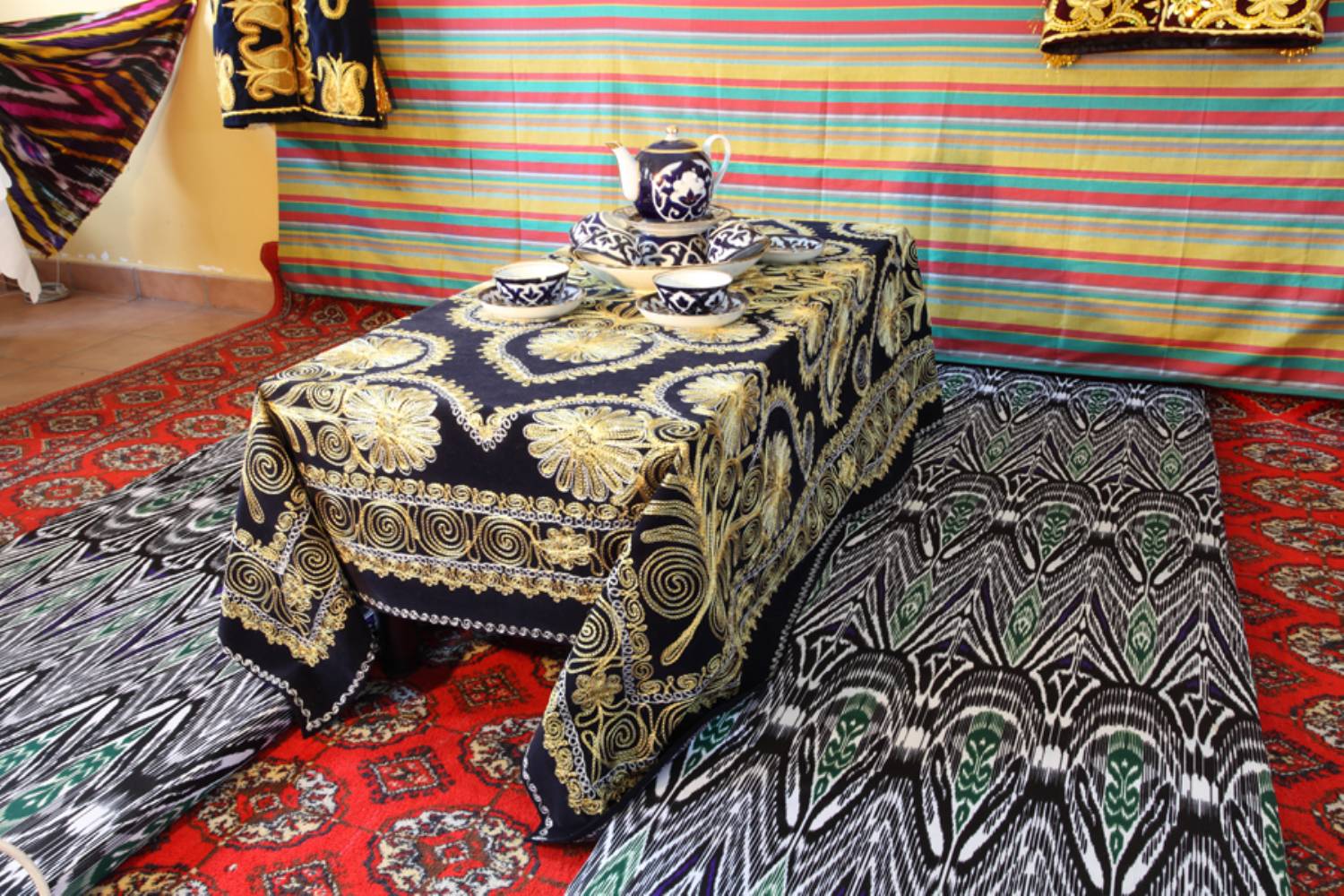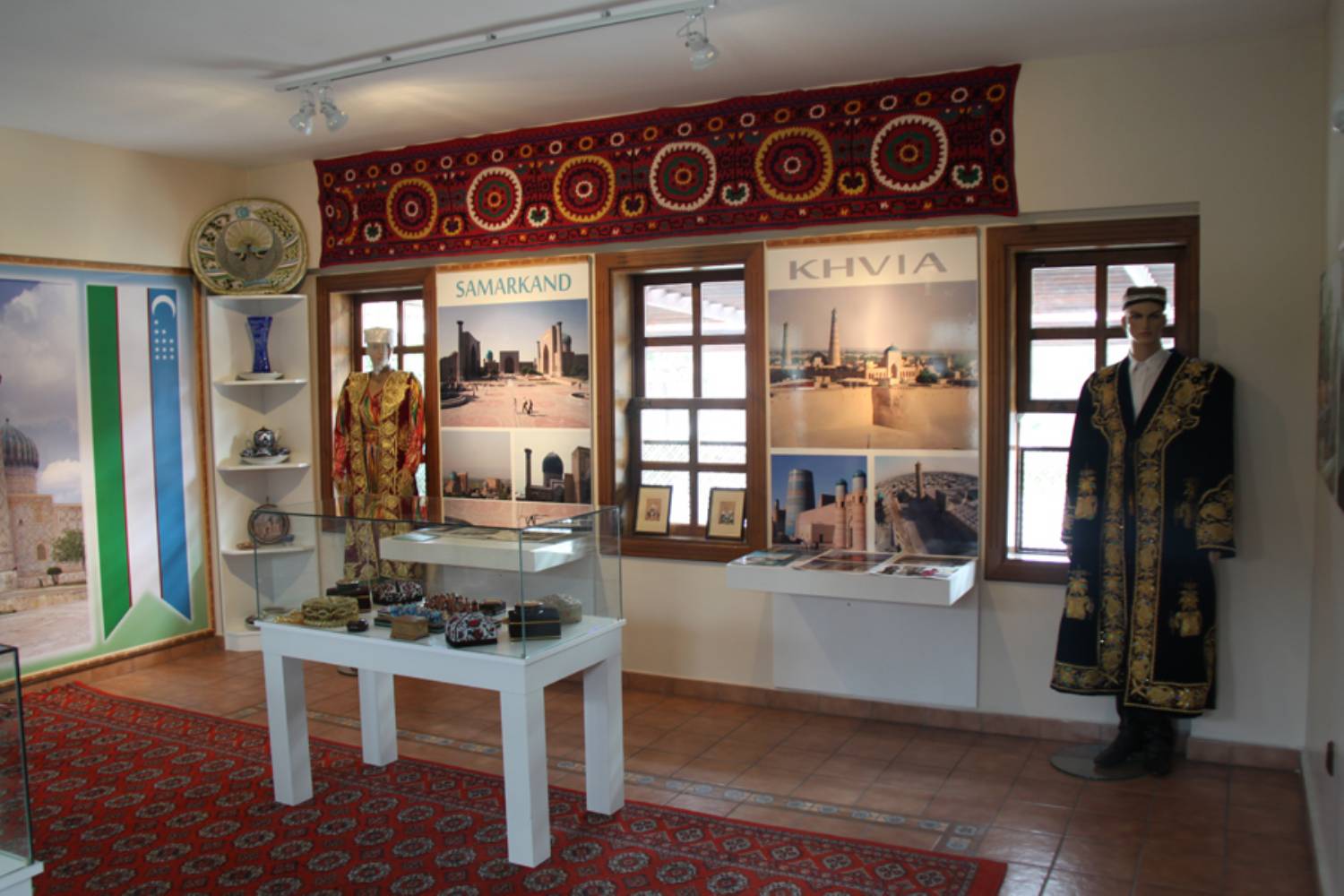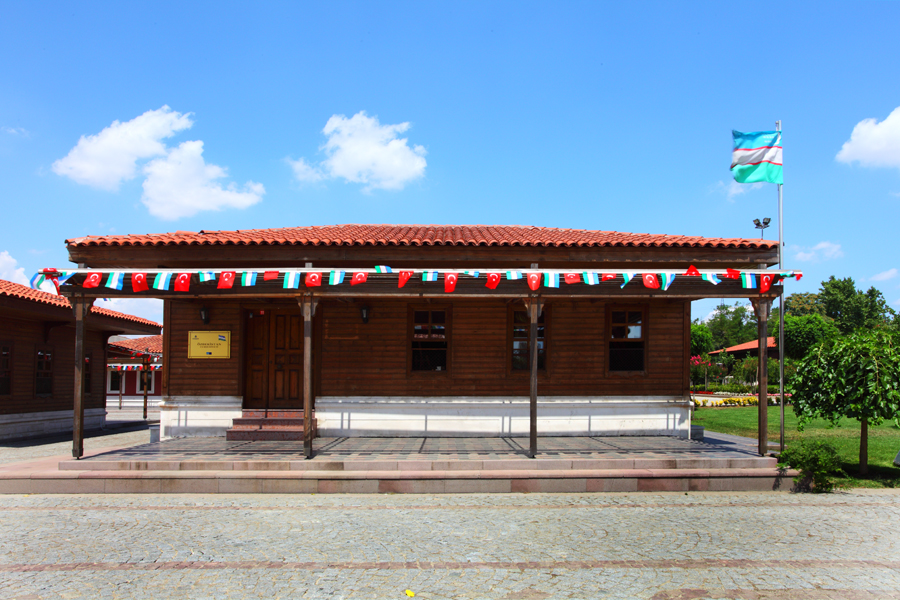Uzbekistan, home to major scientific and cultural centers of Central Asia such as Samarkand, Bukhara, and Khiva, stands as a witness to history through its remarkable medieval architectural heritage. The Uzbekistan Culture House of the Turkic World features models of important historical sites including the Amir Timur Monument, the 15th-century observatory where Qadi Zadeh and Ali Qushji worked, the 16th-century Kukeldash Madrasa, and the Hastimam (Hazrat Imam) Madrasa built by Abu Bakr Ghaffal—recognized as the Islamic Cultural Center in 2007.
Famous for its flavorful cuisine and the heartfelt conversations that accompany it, the iconic Uzbek dining experience is represented here as well. Unique samples of “Piyale” ceramics, including bowls specially made for Uzbek pilaf and traditional tea sets, are displayed at the Uzbekistan Culture House.

Books detailing the history of Uzbek cuisine and regional recipes await curious visitors eager to dive deeper into Uzbek culinary culture.
Uzbek handcrafts, such as jackets (cepken), skullcaps (tubeteika), and decorative cloths made from precious textiles like silk and velvet—emblems of Silk Road heritage—highlight the vibrant artistic spirit of Uzbek culture.

 Turkish
Turkish
